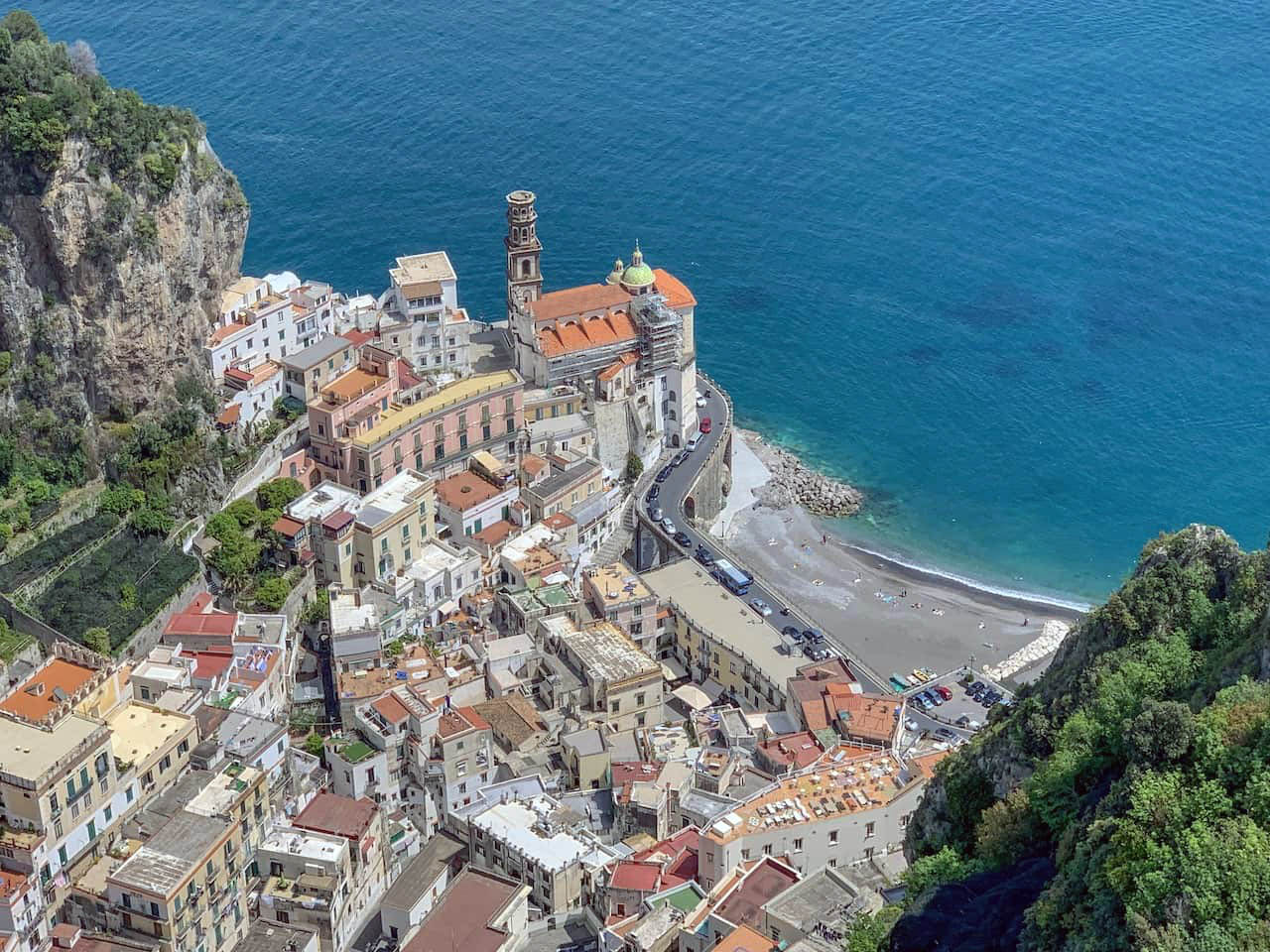An easy-going path leads from Pontone to the fortress that once protected the Maritime Republic of Amalfi. A place steeped in history and legends inscribed in the culture of the Amalfi Coast.
May 14th, 2022. By Anna Volpicelli, photos by Michele Inserra @cartotrekking
One walks through history and legend. The path that leads to the Ziro Tower, one of the watchtowers found along with the Amalfi Coast territory that was used at the time of the Grand Duchy of Amalfi to flush out, from afar, the boats of Saracens arriving from the sea and thus protect not only the coastal borders but also the inhabitants. A route that unfolds along roads that weave between mountains and flat environments and flaunt the naturalistic beauty typical of this land.

The route
It starts from Pontone, the tiny hamlet of Scala, wherefrom the town square. One climbs the stairs of Via Fritto and then continues along the road that leads to Monte Aureo. From this point, lowering your eyes, you can see Amalfi and Atrani: the mountain towers sheer above the two towns.
Following the road, one arrives at the belvedere that offers a view from Capo d’Orso towards Conca Dei Marini. After a brief stop to admire the scenery, you finally cross a coniferous forest to reach the Ziro Tower.
This ancient fortress owes its name to the containers used to store oils and grains. Its cylindrical shape recalls precisely the lines of such objects. A narrow passage, protected by glorious walls, joins the tower to a kind of observation square used for sightings. A point that opens fully to the entire Coast.
The adulterous love of Joan of Aragon
The Ziro Tower has been the setting of critical historical events of the Maritime Republic of Amalfi and the theater of fascinating legends. It is said that in the 1500s, it was here that Giovanna of Aragon was imprisoned with her children, whom she had from an extra-marital affair.
Giovanna of Aragon, daughter of the king of Naples, married the Duke of Amalfi, Alfonso Piccolomini, at a pre-adolescent age. After her husband’s death, she was widowed and fell in love with Antonio Bologna, her administrator, with whom she had a clandestine affair from which two children were born.
Upon discovering the secret love, the two brothers, Cardinal Charles and Federico, tried to separate the two lovers, who fled. The army of faithful to the cardinal and his brother managed to find the couple: they killed Antonio Bologna. They brought Giovanna back to Amalfi, where, the story goes, she was locked in the tower with her children.

Artistic inspirations
The event inspired writers and artists of the time. These certainly include Matteo Bandello, writer, soldier, and monk, who recounted the episode in his Renaissance novella, and John Webster, playwright, who retold the story of Joan of Aragon in his masterpiece “The Tragedy of the Dutchess of Malfi.”
Although easy to walk, the itinerary leading to the Tower of Ziro is imbued with an intensity and deep fascination, which is about the natural beauty it is characterized and an intriguing narrative made of myth and passion.
